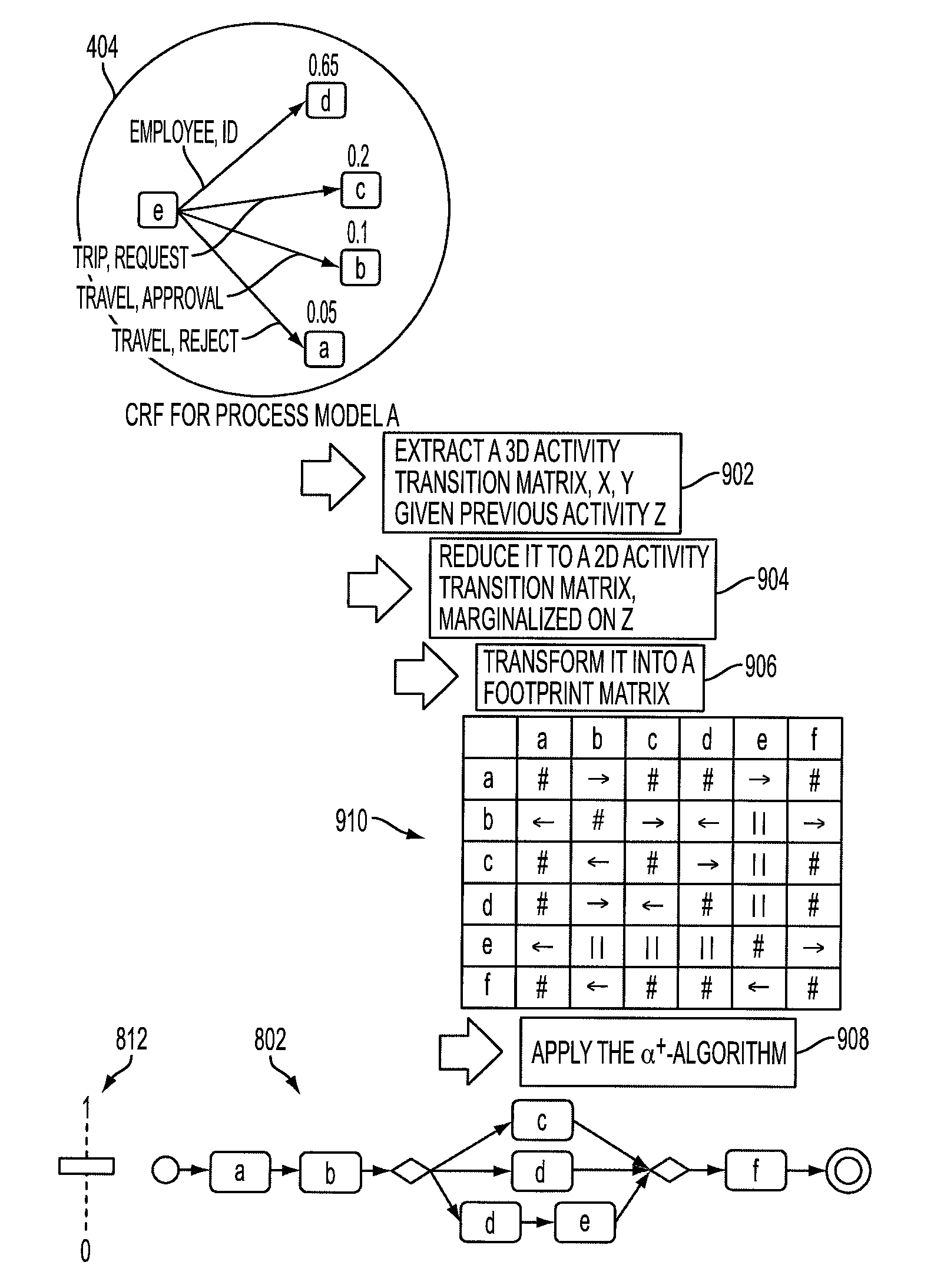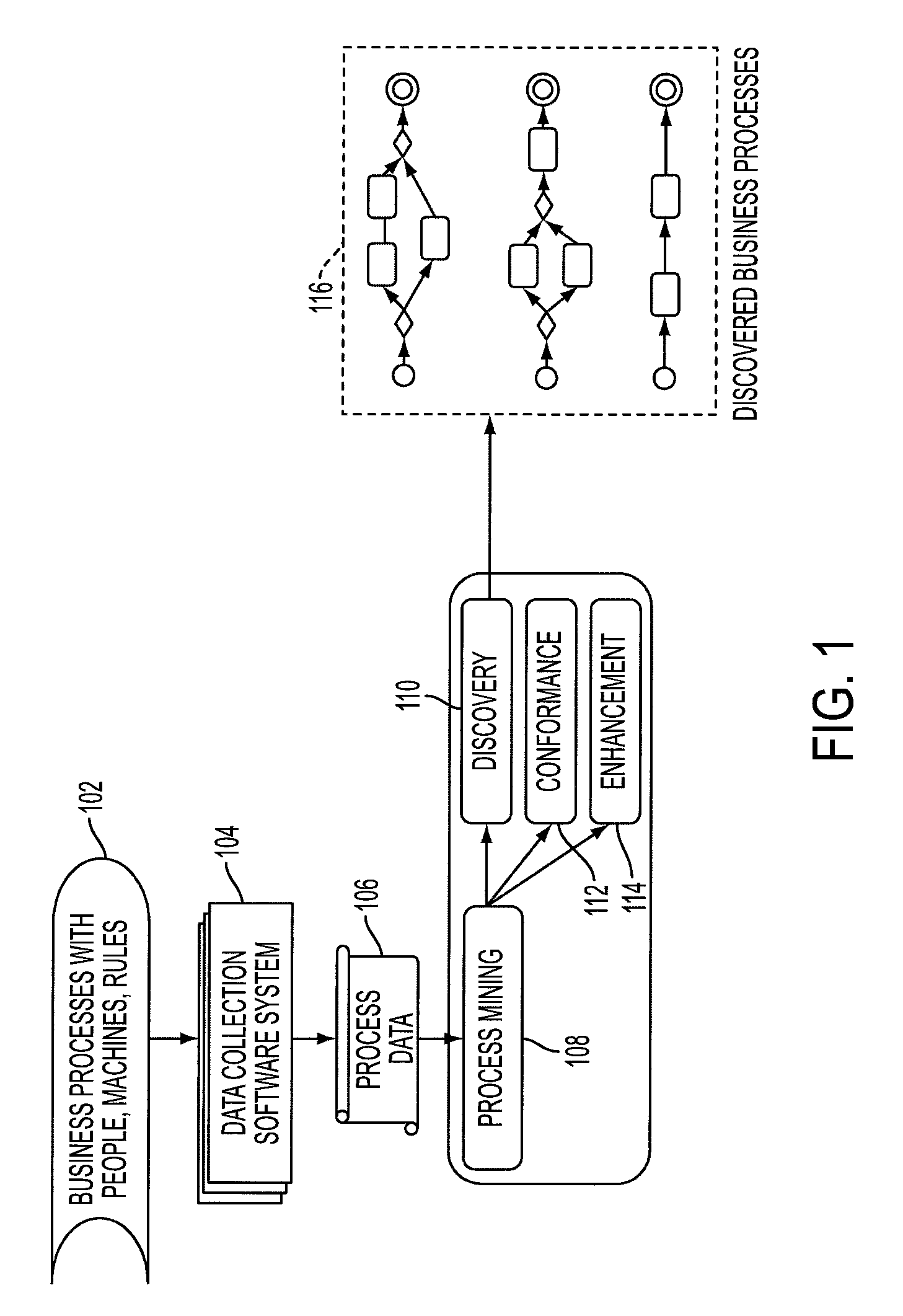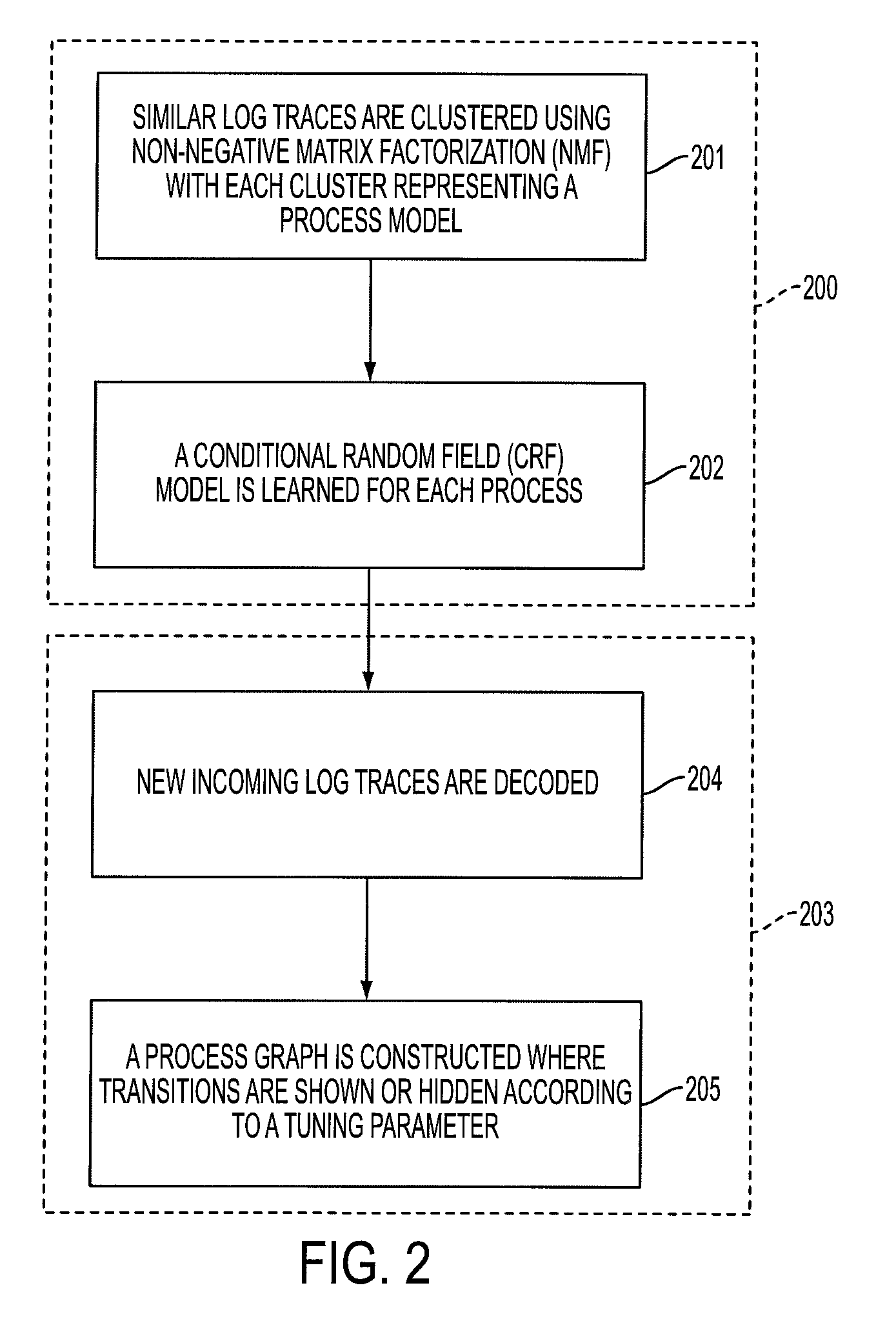Method and system for clustering, modeling, and visualizing process models from noisy logs
a technology of process models and logs, applied in machine learning, instruments, computing, etc., can solve problems such as noise in logs
- Summary
- Abstract
- Description
- Claims
- Application Information
AI Technical Summary
Benefits of technology
Problems solved by technology
Method used
Image
Examples
Embodiment Construction
[0021]The exemplary embodiment relates to a discovery method that builds process models out of noisy event logs and produces sound process models that can be visualized via tunable process graphs that maintain the information on transition probabilities. Some of these terms used herein are defined below:
[0022]A “process model” is a representation of the control flow of a set of activities / services. It can be formalized in languages such as BPMN 2.0, Petri Nets, Causal Nets, etc.
[0023]A “process instance” is one possible execution of a process model, through the reception of a triggering event, and the instantiation of the process model activities.
[0024]A “trace” is a collection of activity log entries that have been generated by the same process instance.
[0025]A “log” is a collection of traces.
[0026]“Noise” may be found in: (a) the occurrence of log entries of exceptional / rare activities in a trace, (b) interleaving process instance traces, and / or (c) incomplete traces.
[0027]TF-IDF ...
PUM
 Login to View More
Login to View More Abstract
Description
Claims
Application Information
 Login to View More
Login to View More - R&D
- Intellectual Property
- Life Sciences
- Materials
- Tech Scout
- Unparalleled Data Quality
- Higher Quality Content
- 60% Fewer Hallucinations
Browse by: Latest US Patents, China's latest patents, Technical Efficacy Thesaurus, Application Domain, Technology Topic, Popular Technical Reports.
© 2025 PatSnap. All rights reserved.Legal|Privacy policy|Modern Slavery Act Transparency Statement|Sitemap|About US| Contact US: help@patsnap.com



